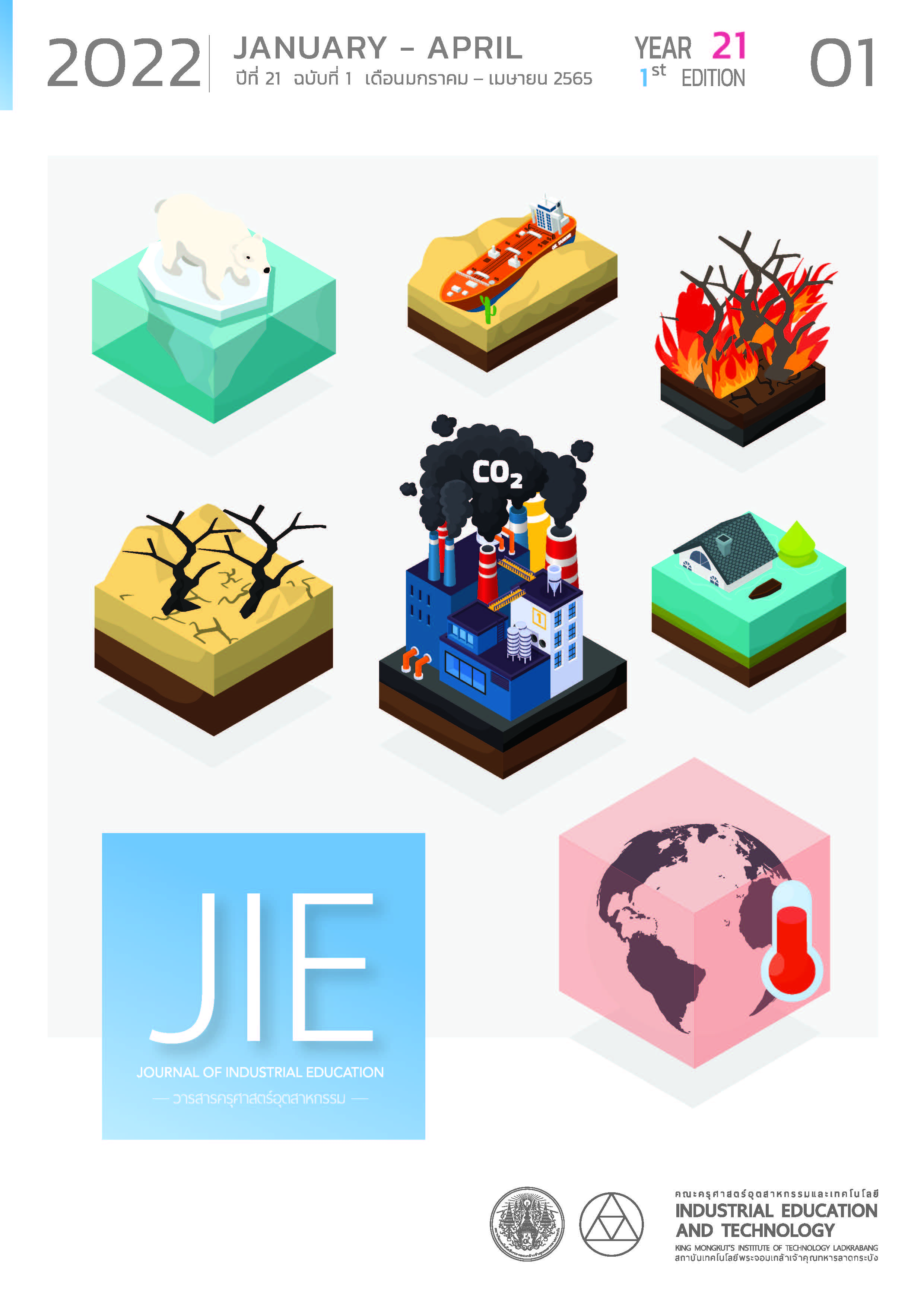A STUDY OF MATHEMATICAL PROBLEM-SOLVING ABILITY IN LINEAR EQUATIONS IN ONE VARIABLE OF GRADE 7 STUDENTS USING CONCRETE-PICTORIAL-ABSTRACT: CPA APPROACH
Keywords:
Mathematical problem-solving ability, Mathematical problem solving, Concrete-Pictorial-Abstract, Linear equations in one variableAbstract
The goal of this study was to compare grade 7 students' abilities to solve mathematical problems in linear equations in one variable using the Concrete-Pictorial-Abstract: CPA technique with 60 percent of the maximum score criterion. A one-group posttest-only design was used in this study. The participants in this study were 44 Grade 7 students from Sriayudhya School who were in the second semester of the 2019 academic year. The cluster random sampling approach was used to choose them. The research instrument of this study comprised (1) linear equations in one variable lesson plans employing the CPA technique, (2) a test of mathematical problem-solving abilities in linear equations in one variable, and (3) a checklist for mathematical problem-solving behavior observation. Descriptive statistics and a Z-test for population proportion were used to analyze the quantitative data acquired. Alice F. Artz and Eleanor Armour-Thomas' observation framework was used to examine the qualitative data obtained. The results showed that at the statistical significance level of .05, more than 60% of the participants who studied mathematical problem-solving skills in linear equations in one variable earned a score greater than 60% of the maximum score requirement. The majority of students did the following: (1) highlighted significant facts or conditions provided by the problem, as well as the problem's aim, (2) created an equation from the graphic to demonstrate the link between the supplied information,
(3) accurately solved an equation utilizing cancellation principles, and (4) comprehended the link between the equation's concrete, pictorial, and abstract concepts.
References
Artz, A. F., & Armour-Thomas, E. (1992). Development of a cognitive-metacognitive framework for protocol analysis of mathematical problem solving in small groups. Cognition and Instruction, 9(2), 137-175.
Battelle for Kids. (2019). Framework for 21st century learning definitions. https://www.battelleforkids.org/
networks/p21/frameworks-resources
Bruner, J. S. (1996). Toward a theory of instruction (2nd ed.). Harvard University Press.
Chaisongkram, S., & Vanichwatanavorachai, S. (2019). The development of mathematics problem solving of fifth grade students taught by TGT technique with bar model method. [Master's thesis]. Silpakorn University. (in Thai).
Hoong, L. Y., Kin, H. W., & Pien, C. L. (2015). Concrete-Pictorial-Abstract: surveying its origins and charting its future. The Mathematics Educator. 16(1), 1-18.
Lee, N. H., Ng, W. L., & Lim, L. G. P. (2019). The intended school mathematics curriculum. In Toh, T. L., Kaur, B., & Tay, E. G. (Eds.), Mathematics Education in Singapore (pp. 35-53). Springer.
Luechai, A. (2012). An analysis of skills used for solving mathematical word problems of seventh grade students. [Master's thesis]. Chulalongkorn University. (in Thai)
Ministry of Education Singapore. (2012). Mathematics syllabus primary one to six. https://www.moe.gov.sg
/docs/default-source/document/education/syllabuses/sciences/files/mathematics_syllabus_primary_1_to_6.pdf
Ministry of Education Singapore. (2013). Nurturing early learners curriculum volume 6. Ministry of Education.
Nasomtrug, T., Suwapanich, S., & Jansila, A. (2012). Analysis of mathematical misconception on linear equation in one variable in Matayomsueksa I students. Academic Journal of Humanities and Social Sciences Buriram Rajabhat University, 4(1), 75-88. (in Thai)
Office of the Basic Education Commission (OBEC). (2017). Indicators and learning standards of mathematics learning area (revised in B.E. 2560) in accordance with the basic education core curriculum B.E. 2551. Press of the agricultural co-operative federation of Thailand.
Pakpiankij, T. (2015). Effect of organizing learning activities by using the model method and cognitively guided instruction on mathematical problem solving ability of eighth grade student. [Master's thesis]. Chulalongkorn University. (in Thai)
Polya, G. (1973). How to solve it: a new aspect of mathematical method (2nd ed.). Princeton university press.
Powell, A. N. (2012). A study of middle school and college students' misconceptions about solving multi-step linear equations. [Master's thesis]. State university of New York at Fredonia.
Souviney, R. J. (1994). Learning to teach mathematics (2nd ed.). Merrill.
Szetela, W., & Nicol, C. (1992). Evaluating problem solving in mathematics. Educational Leadership, 49(8), 42-45.
Thaneepoon, C., & Viriyapong, N. (2020). Development of the arithmetic problem solving abilities of Prathomsuksa 3 students using Polya's problem solving process with bar model. Journal of Humanities and Social Sciences Surin Rajabhat University, 22(1), 93-106.
(in Thai)
The Institute for the Promotion of Teaching Science and Technology (IPST). (2012a). Mathematical skills and processes (3rd ed.). 3Q Media. (in Thai)
The Institute for the Promotion of Teaching Science and Technology (IPST). (2012b). Professional mathematics teacher: the road to success. 3Q Media. (in Thai)
The Institute for the Promotion of Teaching Science and Technology (IPST). (2018). Basic mathematics student book for Mathayomsuksa 1 volume 2. Chulalongkorn University Press. (in Thai)
The National Council of Teachers of Mathematics (NCTM). (2014). Principles to actions: ensuring mathematical success for all.
The National Council of Teachers of Mathematics.
Van de walle, J. A., Karp, K. S., & Bay-Williams, J. M. (2010). Elementary and middle school mathematics teaching developmentally
(7th ed.). Pearson.
Wilson, J. W., Fernandez, M. L., & Hadaway, N. (1993). Mathematical problem solving. In Wilson, P. S. (Ed). Research Ideas for the Classroom: High School Mathematics (pp. 57-77). Macmillan.
Witzel, B. S., Riccomini, P. J., & Schneider, E. (2008). Implementing CRA with secondary students with learning disabilities in mathematics. Intervention in School and Clinic, 43(5), 270-276.
Wong, K. Y. (2015). Effective mathematics lessons throu
Downloads
Published
Versions
- 2022-07-11 (3)
- 2022-05-12 (1)
How to Cite
Issue
Section
License
Copyright (c) 2022 Journal of Industrial Education

This work is licensed under a Creative Commons Attribution-NonCommercial-NoDerivatives 4.0 International License.
"The opinions and contents including the words in papers are responsibility by the authors."
"ข้อคิดเห็น เนื้อหา รวมทั้งการใช้ภาษาในบทความถือเป็นความรับผิดชอบของผู้เขียน"



